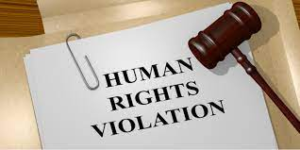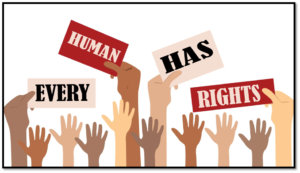
DISCRIMINATION AND INEQUALITY: THE ROOT CAUSES OF HUMAN RIGHTS VIOLATION

INTRODUCTION
The violation of human rights is a problem that exists in all countries. Human rights violations come in all shapes and sizes, from civil rights infractions to economic inequality. Discrimination and inequality are often the primary causes of these infractions.
A variety of human rights abuses result from the tight relationship and reciprocal reinforcement of inequality and discrimination. This essay contends that discrimination and inequality are the main causes of violations of human rights and that resolving these problems is crucial to safeguarding and advancing human rights.
DISCRIMINATION AND INEQUALITY

While discrimination and inequality are two separate ideas, they are sometimes used synonymously. The term “discrimination” describes the unfair treatment of people or groups based on their affiliation with a certain social group, such as a person’s race, gender, religion, or sexual orientation.
Many actions and institutional policies that disfavour particular groups as well as hidden biases that colour our perceptions and conclusions can all be considered instances of discrimination. On the other side, inequality describes how things like resources, opportunity, and power are distributed differently throughout society.
They include economic inequality, social inequality, and political inequality, among others. Discriminatory actions can contribute to inequality, but they can also result from larger social and economic structures.
VIOLATIONS OF HUMAN RIGHTS
When individuals or organisations are denied their fundamental human rights, human rights breaches occur. All people have the same, unalienable, and undivided rights under the law, regardless of their race, gender, religion, or any other trait. In addition to economic, social, and cultural rights like the right to housing, healthcare, and education, human rights also encompass civil and political rights like the right to free expression and the right to a fair trial.
The many different ways that human rights are violated include extrajudicial executions, torture, and discrimination in housing, employment, and education. Governments, private individuals, or societal institutions can all commit them. Human rights violations destroy dignity in people, maintain inequity, and weaken social cohesiveness regardless of who does them.
THE CONNECTION BETWEEN DISCRIMINATION, INEQUALITY, AND HUMAN RIGHTS VIOLATIONS
Many human rights cases of abuse stem from inequality and discrimination. The denial of fundamental freedoms and rights, such as the right to life, liberty, and personal security, can result from discrimination. The denial of economic, social, and cultural rights can result from discriminatory policies that also exacerbate economic and social inequality.

In contrast, inequality can support prejudice by giving various groups access to resources and opportunities inequitably. Economic disparity, for instance, may restrict access to resources like education, healthcare, and other necessities for the realisation of human rights.
Social inequality can limit possibilities for members in vulnerable communities and create impediments to social mobility. Inequality and prejudice both have the potential to erode political liberties and rights. While inequality can lead to political polarisation and corruption, discrimination can restrict access to political representation and involvement.
COMBATING INEQUALITY AND DISCRIMINATION TO UPHOLD HUMAN RIGHTS
Protecting and advancing human rights requires addressing prejudice and inequality. This necessitates a multifaceted strategy that addresses both the immediate consequences of human rights breaches and the underlying causes of inequality and discrimination.
Governments and other social actors must act proactively to stop discrimination and advance equality at the institutional level. This could entail putting anti-discrimination legislation and policies into effect, funding initiatives that support inclusion and diversity in education and training programmes, and making sure that public institutions represent the variety of the communities they serve.
At the societal level, people and groups must fight against discriminatory beliefs and actions, foster social cohesion among various social groupings, and support laws and procedures that uphold social justice and equality.

CONCLUSION
Many human rights cases of abuse stem from inequality and discrimination. Protecting the environment requires addressing these problems, and fostering human rights, too. The denial of civil and political rights, economic and social rights, and cultural rights are just a few examples of the many human rights violations that can result from discrimination and inequality.
A multifaceted strategy involving the involvement of the government, civil society, and individual initiatives is required to solve these concerns. To stop discrimination and advance equality, governments and other social actors must be proactive. This could entail putting anti-discrimination legislation and policies into effect, funding initiatives that support inclusion and diversity in education and training programmes, and making sure that public institutions represent the variety of the communities they serve.
In addition, people and communities need to encourage cooperation among various social groups, fight for laws and practices that support equality and social justice, and confront discriminatory attitudes and behaviours. We can build a society where everyone’s human rights are upheld and protected by working together to combat inequality and prejudice.







